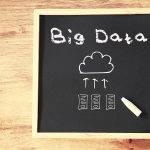We have seen how the interdisciplinary use of big data affected many sectors. Different examples are contagion spreading (Culotta, 2010); music albums success predictions (Dhar and Chang, 2009); or presidential election (Tumasjan et al., 2010). In financial markets, the sentiment analysis probably represents the major and most known implementation of machine learning techniques … [Read more...] about Big Data and Risk Management in Financial Markets (Part I)
Big Data
Learn everything you need to know about big data. Find out how companies are using this revolutionary technology and what it means for your business strategy.
How Big Data Could Affect What You Pay For Car Insurance
Whether you are a good driver or a careless one, there are insurance companies who will be happy to reward you for your skill (or lack thereof). When it comes to using big data collected from cars to benefit our lives, automobile insurance is one clear industry that could see big changes in the next fifteen years. For instance, based on the information that your vehicle shares, … [Read more...] about How Big Data Could Affect What You Pay For Car Insurance
How Data Can Help Your Company Improve Internal Communication
If youre struggling to make your internal communication fast and efficient, then you may be taking the wrong approach. Thankfully, with all of the data you now have at your fingertips, you can make educated choices and implement detailed strategies that lead to effortless communication. 3 Data-Driven Ways to Enhance Internal Communication While you may not spend time thinking … [Read more...] about How Data Can Help Your Company Improve Internal Communication
Big Data Strategy (Part II): a Data Maturity Map
As shown in Part I, there are a series of issues related to internal data management policies and approaches. The answers to these problems are not trivial, and we need a frame to approach them. A Data Stage of Development Structure (DS2) is a maturity model built for this purpose, a roadmap developed to implement a revenue-generating and impactful data strategy. It can be used … [Read more...] about Big Data Strategy (Part II): a Data Maturity Map
How to Use Big Data to Leverage Micro-Moments
With the vast amount of digital data and analytics available, business owners and marketers can better target their marketing initiatives. Think with Google used big data insights to create meaningful solutions businesses can utilize to increase sales. Through big data research, the researchers at Google found that micro-moments are where business big and small have the best … [Read more...] about How to Use Big Data to Leverage Micro-Moments
What is big data?
Big data is a term that refers to the massive amount of digital data created and shared every day. Big data can transform how we live, work, and communicate. It can be used to improve everything from public health and urban planning to business and marketing.
Big data is also changing the way we think about privacy and security. The volume, velocity, and variety of big data present challenges and opportunities for organizations and individuals. Regardless, big data is here to stay, and its impact will only continue to grow in the years to come.
What is big data analytics?
Big data analytics is the process of turning large, complex data sets into actionable insights. Businesses use various analytical tools and techniques, including machine learning and statistical analysis, to do this.
Big data analytics can be used to improve decision-making in areas like marketing, operations, and customer service. It can also be used to identify new business opportunities and optimize existing processes. With the help of big data analysis, businesses can gain a competitive edge by using their data better.
Want to learn more about big data? Datafloq has courses available. Contact us to get started.
When was big data introduced?
The term big data was coined in the 1990s, with some giving credit to John Mashey for popularizing the term. However, the concept of big data has been around for much longer.
Where does big data come from?
In the early days of computing, scientists and businesses began to realize that the amount of data being generated was increasing exponentially. As a result, they began to develop new methods for storing and processing data.
Over time, these methods have become increasingly sophisticated and have played a key role in enabling businesses to make sense of vast amounts of information. Today, big data is used in various industries, from retail to healthcare, and its importance is only likely to grow in the years to come.
What are examples of big data?
One of the most common examples of big data is social media data. With over 2 billion active users, Facebook generates a huge amount of data every day. This includes information on user interactions, posts, and even location data. Analyzing this data can help companies better understand their customers and target their marketing efforts.
Another example of big data is GPS signals. These signals are constantly being generated by devices like cell phones and fitness trackers. When combined with other data sets, GPS signals can be used to provide insights into everything from traffic patterns to human behavior. Finally, weather patterns are another type of big data set. By tracking these patterns over time, scientists can better understand the impact of climate change and develop strategies for mitigating its effects.
How do companies use big data?
Companies use big data in marketing, product development, and customer service. By analyzing large data sets, businesses can identify patterns and trends that would be otherwise difficult to spot. For example, a company might use big data to track customer behavior patterns to improve its marketing efforts.
Alternatively, a company might use big data to improve its products by identifying areas where customers are most likely to experience problems. For instance, big data can be used to improve customer service by finding pain points in the customer journey. Ultimately, big data provides companies with a valuable tool for gaining insights into their business operations.






